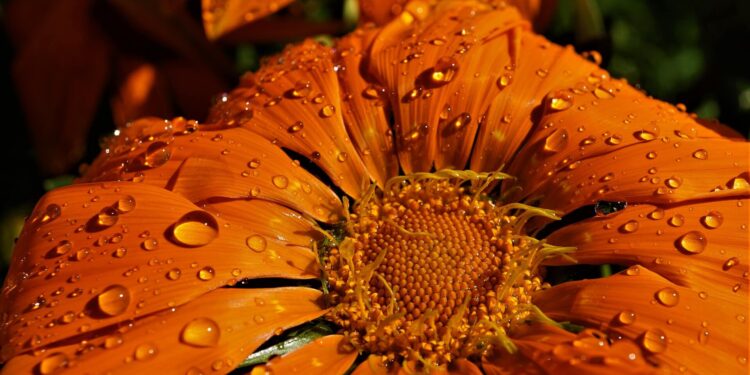As I sit here writing this article on a Sunday afternoon yet another storm is raging outside with high winds and a deluge of water pouring from the sky. I cringe every time it rains because I have a leak in my roof, and I am waiting for the roof repair men to come and replace the roof. I am also concerned what all these frequent rainstorms are doing to my garden and plants.
We have all watched old cowboy movies where people are on the verge of hunger and ruin because there has been no rain for weeks or a corrupt landowner has diverted a river or a creek away from farmer’s fields. The cows are dead in the fields as the corn shrivels and dries up. The lack of water for most plants means a certain death. But we often don’t realize too much water can become a huge problem too.
Plants take in carbon dioxide and produce oxygen. If the roots are submerged in water or if the ground is saturated with too much moisture, plants can’t exchange the atmospheric gases needed to survive. If the roots are too wet, they can’t take in the nutrients pants need to live. Too much moisture can wash away important nutrients like nitrogen from the soil. Too much moisture can also cause root rot and provide the perfect environment for fungal growth. Plants can’t perform photosynthesis, turning sunlight into food with too much moisture. Thick rain clouds blocks sunlight needed for plants to make their food. Excess moisture attracts an army of slimy slugs who enjoy munching your plants to the ground.
Too much rain will hamper your tomatoes from producing fruit and cause melons and radishes to crack open. Warm temperatures and excess water give the wind driven spores of blight and all sorts of fungal infections to attack many types of plants. Sadly, the effects of too much moisture are not realized until much later, and it is too late to save the plant.
Too much water gives the perfect breeding ground for pests like mosquitoes, ticks and fleas. Beneficial insects like bees have trouble pollinating plants in rain downpours. If the bees don’t pollinate crops and fruit, there would be decrease in food production. Rain can damage flowers such as roses, perennials and annuals. Walking in muddy areas can compress the soil, making it more difficult for plants in the future.
There is very little humankind can do to affect the weather or climate, but there are simple steps that you can do to help your garden. Cover tender plants with tarps in heavy rain and winds, so they don’t get knocked down. Try to select native pants that do well in your climate. Plant things in wet areas of your garden that enjoys the excess moisture. Give plants room, so they can have good air circulation to slow fungal infections. Try raised beds with good drainage, and avoid planting trees with fast growth that produce weak wood that is easily damaged in storms.
We can’t control the amount of rain or the number of days it rains, but we can try to minimize the effects of what seems like endless rainstorms. For me, I have the ability to change the effects of rain to my roof and ceiling. I just wish the roof repair men would hurry up and fix the roof!
Image by Mylene2401


